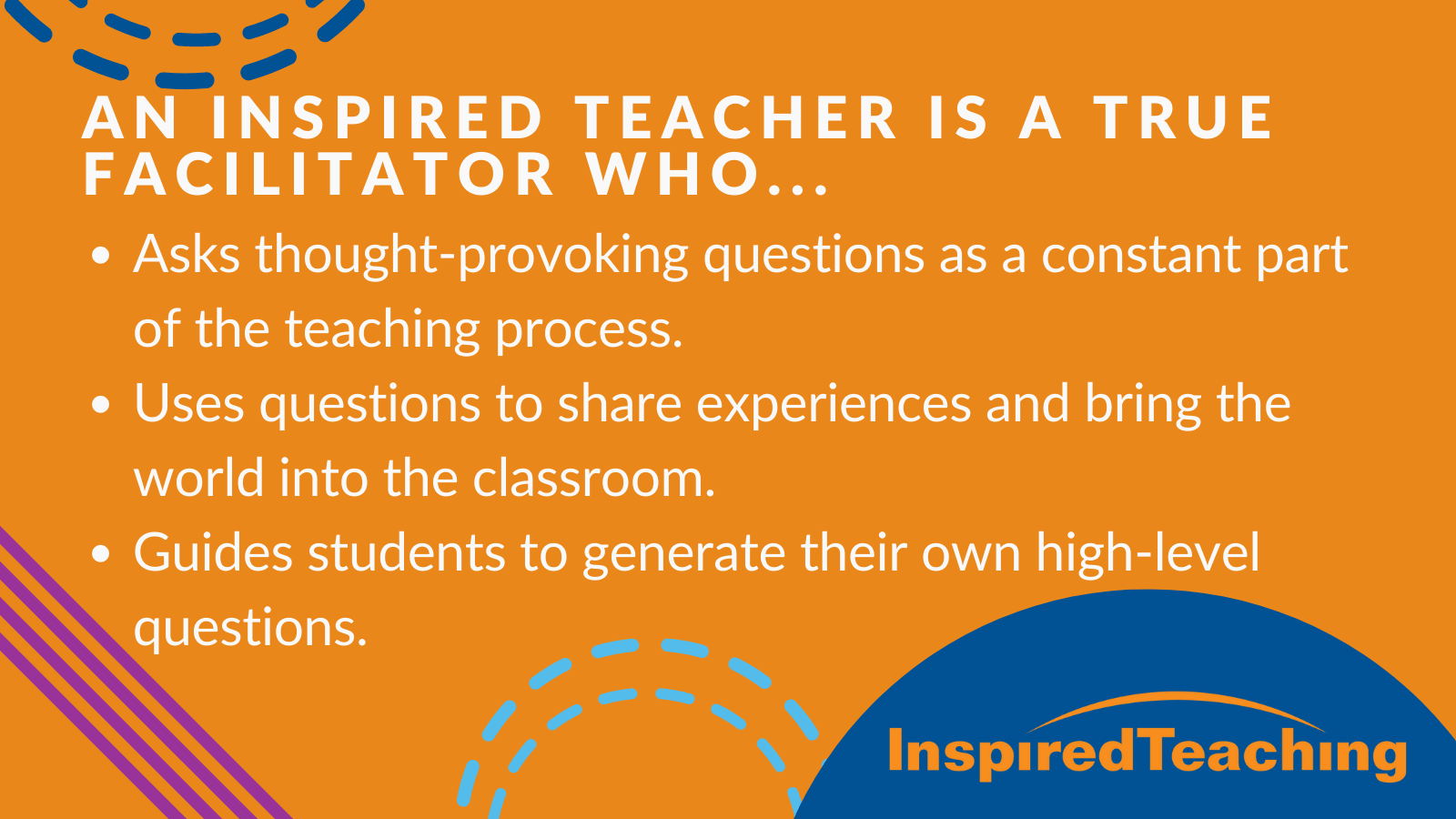September 19, 2022
By Aleta Margolis, Founder and President, Center for Inspired Teaching
Hooray for Monday is a weekly blog filled with questions, ideas, reflections, and actions we can all take to remodel the school experience for students.
You can now listen to Hooray for Monday on Spotify! Check out our podcast here.
The word “deliver” often shows up in describing what teachers do in the process of instructing students. “Tomorrow I’m going to deliver a lesson on the parts of the human body.” Or “Let’s make a plan for how we’ll deliver the unit on World War I.” It’s a word that’s generally chosen without much thought, and intended to be a synonym for “prepare” or even “teach.” However the word “deliver” implies a passive role for the student: to receive whatever it is the teacher is delivering. Postal workers deliver mail to empty, inert mailboxes. Kids aren’t mailboxes.
When we challenge our assumptions, even rethinking the words we choose, we’re taking important steps toward shifting the school experience for students toward authentic engagement.
One way to avoid delivering information is simply to begin asking more questions.

When I was a middle school teacher, I was fascinated by the way my students learned. One thing I observed was that there appeared to be a difference between children who’d been asked lots of questions by adults and those who’d been told lots of things, those to whom a curriculum had been “delivered.”
The kids who’d been asked questions learned to wonder, to imagine, to create—to think. They asked questions themselves:
-
What will happen if I mix these two chemicals?
-
How come there are more men than women in the Senate but more women than men teaching in my school?
-
Why do we study ancient history in sixth grade?
-
Who figured out that there are 360 degrees in a circle and how did they figure it out?
-
How did Galileo feel when he got excommunicated from the Church for proclaiming that the Earth wasn’t the center of the universe? Was he mad? Was he scared?
The kids who’d been told lots of things had learned complacency. They’d learned to wait for directions, to ask the teacher if their work was good, to look to the teacher, instead of themselves, when there was a problem to be solved.

I observed this again a number of years later, when I was working with a group of 4th-grade students and their teachers at a summer school program. During lunch break, one student wanted to buy a snack from the vending machine. He walked over to me and asked if I could help him out.
“What do you need?” I asked him.
“My teacher said the granola bar costs 5 quarters,” he explained, “But I only have 3.”
“Can I see what you have?” I asked. He held out his hand. He had 3 quarters, plus 7 or 8 dimes. “So, how much do you have, and how much do you need for the granola bar?” I continued.
He didn’t respond at first. Then he said, “My teacher says it’s 5 quarters, and I only have 3.”
I had watched this young student solve pretty complex addition problems. This wasn’t an issue of ability; I knew he had the skills to figure this out.
I continued asking him questions to help him make the connections, and with each response, he came closer and closer and ultimately figured out how to choose the coins he needed for his purchase. But he was still hesitant to put them in the machine. I asked him why. “It’s not 5 quarters,” he said, “and my teacher told me 5 quarters.”
I asked him if he wanted to give it a try anyway (and to make it less of a risk, I offered to reimburse him if his coins got lost in the machine). He put the coins in, got his granola bar, and was visibly excited and relieved. “It worked!” he said.
“You figured it out!” I said (avoiding the dreaded “Good job!”). And we agreed he’d report back to his teacher after lunch about what had happened, and what he’d learned.
A colleague sitting nearby had observed this interaction and pulled me aside after the student left. “Are you wondering why this capable kid took so long to figure out how to trade in two quarters for 5 dimes?” she asked. I nodded. “It might be worth wondering how many times in his life an adult has challenged him to solve a problem on his own.”
When we stop delivering information and start asking more questions, we begin putting children in charge of their own learning. That’s vital to their success beyond our classroom, and it opens up space for our students to teach us.
Resources for More Questioning

The Surprising Power of Questions
This Harvard Business Review article talks about the importance of effective questioning for the success of companies – the lesson is clearly applicable in the classroom too. As the article notes, “by asking questions, we naturally improve our emotional intelligence, which in turn makes us better questioners—a virtuous cycle… Questioning spurs learning and the exchange of ideas, it fuels innovation and performance improvement, it builds rapport and trust.”
Track the Questions You Ask
Thoughtfully placed questions that require students to use higher-order thinking skills encourage students to probe deeper, follow their curiosity, solve problems, and construct knowledge and meaning. In this Instigator of Thought Challenge, you can track your questions and look for opportunities to insert more powerful questions into your teaching.


